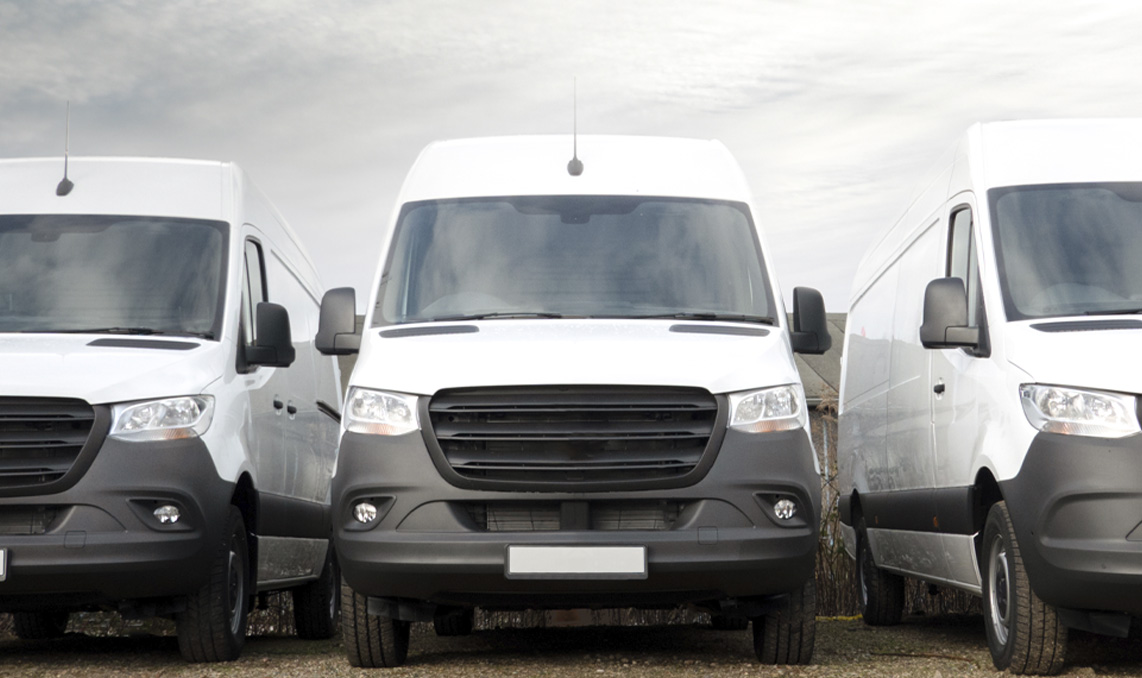-
What We DoFrom fleet management and productivity solutions to upfitting, fabrication, and insurance, Holman has the integrated automotive services expertise to keep your business moving.Overview
-
ResourcesWe have a lot to share. Browse our resources library for current insights, data, strategies, and success stories from our own experts in their respective fields.Overview
-
About UsWhen Holman was founded in 1924, we set something positive in motion. Our consistent focus on people and our commitment to integrity make us who we are today.Overview
 Join Our TeamWe’re not just in the automotive business, we’re in the people business. Join us for the ride.Browse Careers
Join Our TeamWe’re not just in the automotive business, we’re in the people business. Join us for the ride.Browse Careers
Can One Van Do Everything?
Holman Marketing
April 5th, 2023

Fleet mix: Can one vehicle *still* do everything?
Vans are like the Swiss Army knife of the business world. You need them to be able to do five different jobs. Unfortunately, that often results in people over-speccing and over-sizing their commercial vehicle fleets.
Changes such as congestion charging zones and increasingly strict emissions regulations make selecting fleet vehicles even more challenging.
Future of fleet
In 2023, the Ford transit marks its 58th birthday. Launched before England won the World Cup, over three million Transit vans have been sold in the UK. The image of the man in a van has become synonymous with our economy – and in Ford’s own words, has been “the backbone of Britain”.
The Transit van was the single go-anywhere, do-anything van. But that fleet strategy could be reaching its end.
On the surface, operating a fleet of identical vehicles is attractive. You can buy in bulk, potentially negotiating a discounted price. Drivers and operators can develop a familiarity with the vehicle, and maintenance costs could be lower.
On the other hand, you’re limited in payload and powertrain. There’s also a trend for operators to “buy bigger”, which means having the unused capacity and the increased cost of paying for larger vehicles.
In a previous blog on the future of fleets, we briefly performed a PESTLE analysis to highlight some of the existing and emerging challenges.
Emerging challenges include the increasing growth of e-commerce and last-mile deliveries. This is coupled with increasingly strict environmental regulations, including CAZ and emissions targets.
Electrification is also a large part of future fleet planning. However, while vehicle availability is easing, infrastructure challenges and historically high energy costs are causes for concern.
The vehicles your fleet is operating today will unlikely be those you need for the future.
Driving what’s right
There’s no better opportunity to assess your vehicle selection than today. What’s crucial is to evaluate your fleet in the context of your business, requirements, and strategy.
Your business has likely changed in the post-pandemic world, but too many fleet operators have yet to understand how this will impact their operations.
You must develop a fleet strategy that reflects your growth plans and business objectives.
At Holman, we call this “driving what’s right”, – which means having the best fleet mix for your business. It’s about having the correct number, type, and size of vehicles for what you’re doing today.
Decisions shouldn’t be made by instinct but driven by data, information, and insight. Flexibility is critical – enabling you to react to circumstances as they change.
Driving seat decisions
Fleet operators are in the driving seat, making decisions that will influence the success of their businesses.
As a result, we see a shift away from single-vehicle sourcing to a mixture of vehicles, including EVs, enabling them to satisfy customer demands.
Fleet operators must operate in uncertainty, so flexibility is critical. As a result, some fleet managers are taking a more radical approach, focusing on their core activities and outsourcing elements of operations to contractors.
Contracting others to manage operations, such as large-term deliveries, can reduce fleet sizes, cut operating costs, and improve the customer experience.
While some operators may find that one vehicle can still do everything, you will only know this if you ask the question.
There’s no better time to ask whether you’re driving what’s right and no better partner than Holman to support you.
Get in touch today with one of the team to get more info about our fleet management services.
Next Post
Full Beam – Q&A with Matt HayesmanRelated Resources
Explore more related industry news, insights, and developments.
It looks like you've navigated to our Holman UK website and are located outside of this region. Would you like to continue or select a different region?
✕






